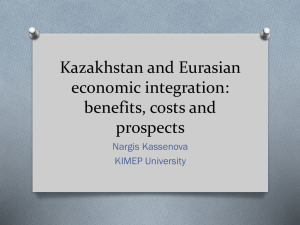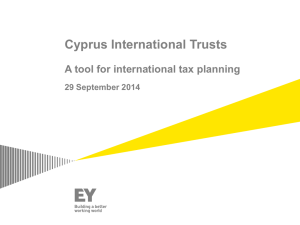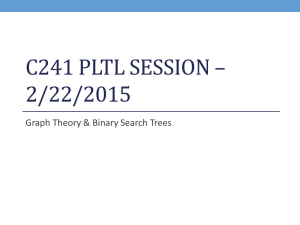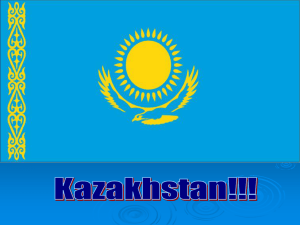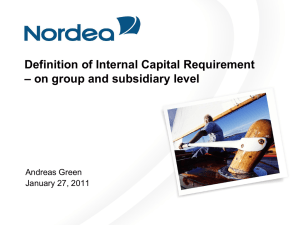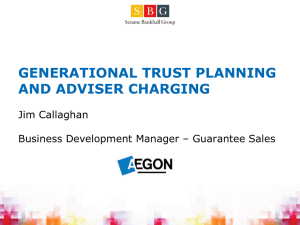PowerPoint Template 2009
advertisement
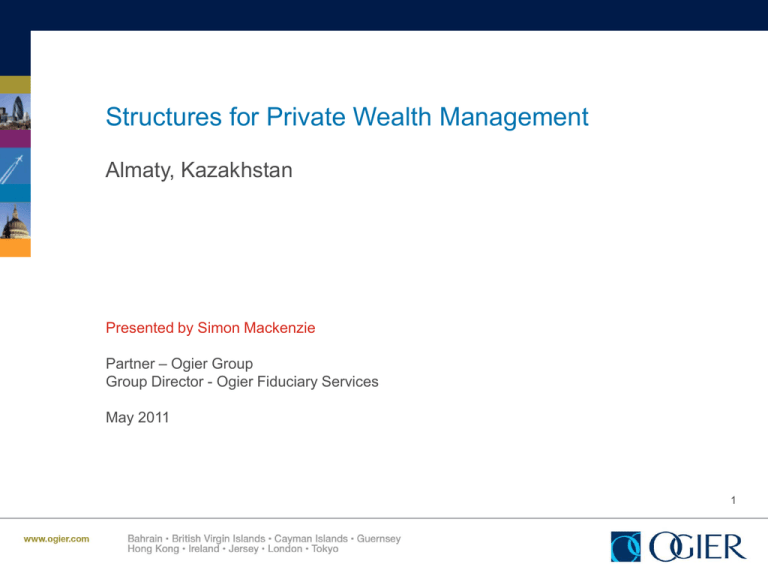
Structures for Private Wealth Management Almaty, Kazakhstan Presented by Simon Mackenzie Partner – Ogier Group Group Director - Ogier Fiduciary Services May 2011 1 Contents 1. 2. 3. 4. 5. Introduction to trusts Foundations Companies Case study and example structure Administration issues • Control • Due diligence / “KYC” • Confidentiality • Incorporation • Ongoing administration • Liquidation 6. Features and benefits of international jurisdictions 7. How can Ogier help? 2 Trusts - introduction to the trust concept A trust is a legally binding arrangement whereby a person (known as a settlor) transfers assets to another person (known as a trustee) who is entrusted with legal title to the trust assets, not for his own benefit, but for the benefit of other persons (known as beneficiaries, who may include the settlor or for a specified purpose). The components of a trust: • Settlor • Trustee • Beneficiaries • Trust fund • Protector (optional) 3 Trusts - structure Protector (optional) Letter of Wishes Settlor Trustee Beneficiaries Company Trust Fund Company Settled assets Company 4 Uses of trusts Trusts can be established for many reasons, be it business continuity, personal succession, asset protection, tax efficiency, family governance or confidentiality. Potential benefits include: • Provide for dependants - distributions can be made to children at predetermined ages, or for specific purposes such as funding education • Business continuity and preservation of family wealth - pass on wealth intact through generations • Protection of assets against future claims against the owner • Estate planning - avoid costs, delay, legal problems, publicity and unwanted procedures on death • Avoidance of forced heirship • Tax planning 5 Foundations - introduction to the foundation concept • Foundations are vehicles for holding assets. • A foundation is traditionally viewed as being somewhere between a trust and a company • A foundation must usually be established with one or more ‘objects’. Objects can be charitable, non-charitable or a mixture of both • Permissible objects might include, for example, benefiting a particular person or class of persons or carrying out a specific purpose or holding a particular asset • “Ownerless” incorporated vehicle with separate legal personality • A foundation’s powers will be exercised by its council (similar to a company’s board of directors) 6 Foundations – structure Advisors (optional) Founder Guardian (optional) Foundation Council Objects Company Foundation (charter and regulations) Company Registered office Company 7 Uses of Foundations Common reasons for the establishment of a Foundation include: • Business planning • Holding assets to benefit family members. • Succession planning to enable family assets such as businesses to benefit the next generation without the need to physically divide that asset. • Carrying out charitable or philanthropic purposes. • Retaining and preserving specific assets. • Holding an asset such as a company to carry out a specific transaction. 8 Companies A company is an incorporated body with separate legal personality formed for the purpose of business or a special purpose Uses of international companies: • Holding vehicles • Segregation of assets • Funding and financing • Listing vehicles • etc 9 Company structure Shareholders Business Board of Directors Advisors Memorandum of Association Articles of Association Registered office Business Business 10 Case Study Kazakh Individual Key considerations: 100% owns Kazakh Holding Co. • Income for owner and family members • Succession planning for the business • Asset protection Subsidiary Subsidiary • Estate planning Businesses in Kazakhstan 11 Example Structure Trust International Holding Co. Holding Company (Double Tax Treaty Jurisdiction) International Holding Companies (Assets outside Kazakhstan) Kazakh Holding Co. Kazakh Holding Co. Subsidiary Subsidiary Subsidiary Subsidiary Business Assets in Kazakhstan 12 Administration - issues of control • Governance • Potential tax liability • Methods of retaining influence • Trusts • Foundations • Companies 13 Administration – due diligence / “KYC” • Why is it required? • Documents / information required • Who is it provided to? • Confidentiality • In what circumstances could it be released? 14 Administration – incorporation • Incorporation • Memorandum and Articles of Association • Subscribers • Beneficial Ownership • Corporate Purposes 15 Administration – ongoing issues • Directors • Company secretary • Registered office • Accounting 16 Administration – liquidation • Liquidation plan • Declaration of solvency • Filings at the registry • Effect of appointment of liquidator • Certificate of dissolution 17 Features and benefits of international jurisdictions • Tax neutrality • Stable jurisdictions – politically and economically – internationally recognised by banks, multi-nationals, stock exchanges etc • Flexible and robust regulatory regimes and effective court systems • Confidentiality • Flexible corporate legislation • Exit strategies • Internationally compliant – AML, regulation, tax – OECD/IMF/FATF/EU • Professional expertise 18 How can Ogier help? • Integrated legal and administration expertise – “one-stop shop” • Bespoke services tailored to individual client requirements • Access to highly qualified and motivated staff • Responsive and consistent client service – “can do” attitude • Transparency / flexibility regarding fee charging arrangements • Access to multi-jurisdictional expertise through one group • Geographic / time-zone locations 19 Our Global reach Over 800 staff, 52 partners, 190+ lawyers and 285 professional administrators across nine jurisdictions 20 Thank you Presented by Simon Mackenzie Partner – Ogier Group Group Director, Ogier Fiduciary Services Tel: +44 1534 504392 Fax: +44 1534 504444 simon.mackenzie@ogier.com 21
